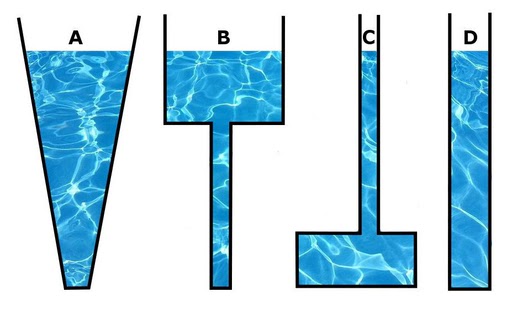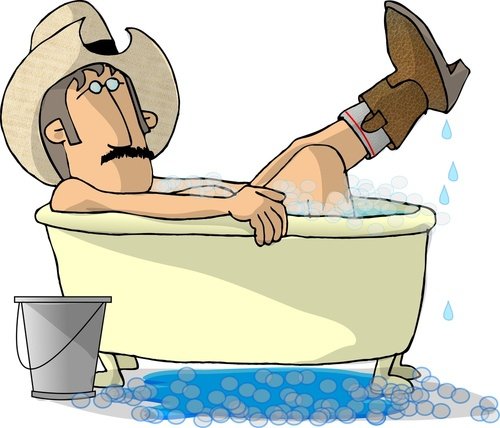When you are inside the tub, the water gets displaced from its original position, causing it to spread out and increase the water level in the tub.
For many people, this may seem like a strange question. Some might even consider it foolish. Why think about how to empty a bathtub? Just let the water drain out and it’s done, right?!

Emptying a bathtub is obviously easy, but what is the fastest way to do it? Should you drain it while still inside or step out and let it drain?
Interestingly, a basic physics equation can help you drain the tub quickly. However, first, we need to understand an important term related to this concept…
Understanding Hydrostatic Pressure
In simple terms, hydrostatic pressure refers to the pressure exerted by a fluid at equilibrium at a specific point within the fluid, due to gravity. It has a direct relationship with the height of the liquid. In other words, as the height of a fluid increases, so does its hydrostatic pressure. This is because the weight of the fluid increases with height, due to the stronger force of gravity.
Now, here’s the million-dollar equation:
 where ‘P’ represents pressure, ‘p’ (pronounced as ‘rho’) represents the density of the fluid (water), ‘g’ represents the acceleration due to gravity, and ‘h’ represents the height of the liquid (water level in the tub).
where ‘P’ represents pressure, ‘p’ (pronounced as ‘rho’) represents the density of the fluid (water), ‘g’ represents the acceleration due to gravity, and ‘h’ represents the height of the liquid (water level in the tub).
As shown in the equation above, the pressure at a particular height, let’s say ‘h’, is directly proportional to the sum of the atmospheric pressure and the product of the fluid’s density, acceleration due to gravity, and the height of the liquid. This means that the higher the fluid (in this case, water) is, the more pressure and potential energy it possesses.
Furthermore, the hydrostatic pressure at a given height is not affected by the shape of the container holding the liquid; only the depth influences the pressure. (Source)
 The hydrostatic pressure of a liquid is not dependent on the shape of its container
The hydrostatic pressure of a liquid is not dependent on the shape of its container
You may already know that under standard conditions, a greater height leads to a higher velocity of liquid ejection. Consider a water filter, for example. When it is full, you might have noticed that water flows out of the tap with greater speed.
Have you ever wondered why taps are usually placed near the base of a filter or any fluid container? Why not install them higher up? Wouldn’t it be more convenient (for a person of average height) than bending down to fill a mug?
 The speed of water depends on its height in the container (Image Source: Wikimedia Commons)
The speed of water depends on its height in the container (Image Source: Wikimedia Commons)
Once again, the reason behind this is that greater height leads to increased pressure and, subsequently, higher velocity of the ejected liquid.
So, how can you personally increase the height or level of water inside the tub – by staying inside it or stepping out?
Response: To stay safe, it is recommended that you stay inside the bathtub.

The reason for this is that when you get into the tub, your body displaces some of the water, causing it to try and fill any available space, resulting in an increase in the water level of the tub.
This principle can also be applied in various other situations. If you need to quickly empty a container filled with water, regardless of its size, you can achieve this by finding a way to raise the water level, allowing it to drain faster.
